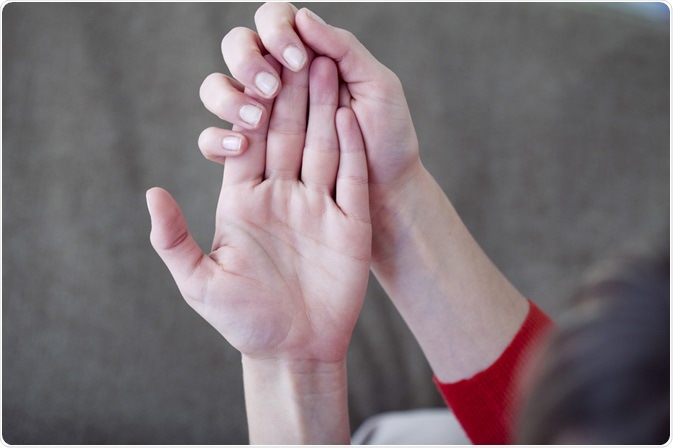
Raynaud’s Syndrome Diagnosis and Treatment
Raynaud’s syndrome is a rare condition characterized by the narrowing of peripheral blood vessels in response to cold temperature, stress, or hormones.
 Image Point Fr | Shutterstock
Image Point Fr | ShutterstockPrevalence of Raynaud’s syndrome
Raynaud’s syndrome is a rare disorder, affecting 3-5% of people worldwide. It is categorized into two forms: primary and secondary Raynaud’s syndromes. The primary form occurs in the absence of any underlying disease and accounts for 80-90% of all Raynaud’s syndrome cases. Moreover, its prevalence in men and women is 1-12% and 2-20%, respectively.
Secondary Raynaud’s syndrome occurs because of an underlying disorder. About 14-37% of patients with the primary form eventually develop the secondary form. Nearly 99% of them are also prone to develop autoimmune diseases, such as systemic sclerosis.
What are the symptoms?
Raynaud’s syndrome generally affects the fingers and toes; in some rare cases, it also affects the nose, ears, nipples, and lips. Common signs and symptoms include:
- change in skin color in response to cold or stress
- cold sensation in fingers and toes
- numbness, pain, or prickling sensation in the affected area
- sores on the finger pad (in severe cases)
- rarely, gangrene in the fingers due to complete blockage of the artery
How is Raynaud’s syndrome diagnosed?
The diagnosis of Raynaud’s syndrome is generally based on the medical history, physical examination, and laboratory test results. Diagnostic tests that are performed to confirm the disease include:
Cold stimulation test
In this test, fingers are first exposed to cold and a device is used to check how long they take to regain normal temperature after the removal of the cold stimulus. In the presence of Raynaud’s syndrome, more than 20 minutes is required to regain the normal temperature.
Nail fold capillaroscopy
This test involves putting a drop of oil at the base of the fingernail and looking for abnormal blood vessels under a microscope.
Antinuclear antibody test
The antinuclear antibody test looks for autoantibodies produced in autoimmune disorders.
Erythrocyte sedimentation rate
This test looks at the rate at which red blood cells settle at the bottom of a tube. A faster rate of settling than normal denotes the presence of an inflammatory or autoimmune disorder.
How is Raynaud’s syndrome treated?
To date, there is no cure for Raynaud’s syndrome. However, proper and timely treatment can significantly reduce the number and severity of attacks. Protecting the skin from cold by wearing gloves, heavy socks, and layered clothes can be very effective in reducing symptoms.
Preventive measures that are generally to alleviate the signs and symptoms of Raynaud's syndrome include:
Lifestyle changes
Avoid smoking, take regular moderate exercise, control the stress level, and avoid locations which are prone to rapid changes in temperature.
Medications
Raynaud's syndrome can be managed with medicines that dilate blood vessels, such as calcium channel blockers, alpha blockers, and other vasodilators
Surgery
In severe cases, surgery is performed to remove specific sympathetic nerves in the hands and feet. Sometimes, chemicals such as local anesthetics are injected to block these nerves. In rare cases, surgery is required to remove damaged tissues or even for amputation of the affected toe or finger.
Alternative measures
Stay in warm places, keep the hands and feet warm, massage the fingers and toes, and avoid medicines that could trigger an attack. .
Last Updated: Jan 16, 2019






















.png)











No hay comentarios:
Publicar un comentario